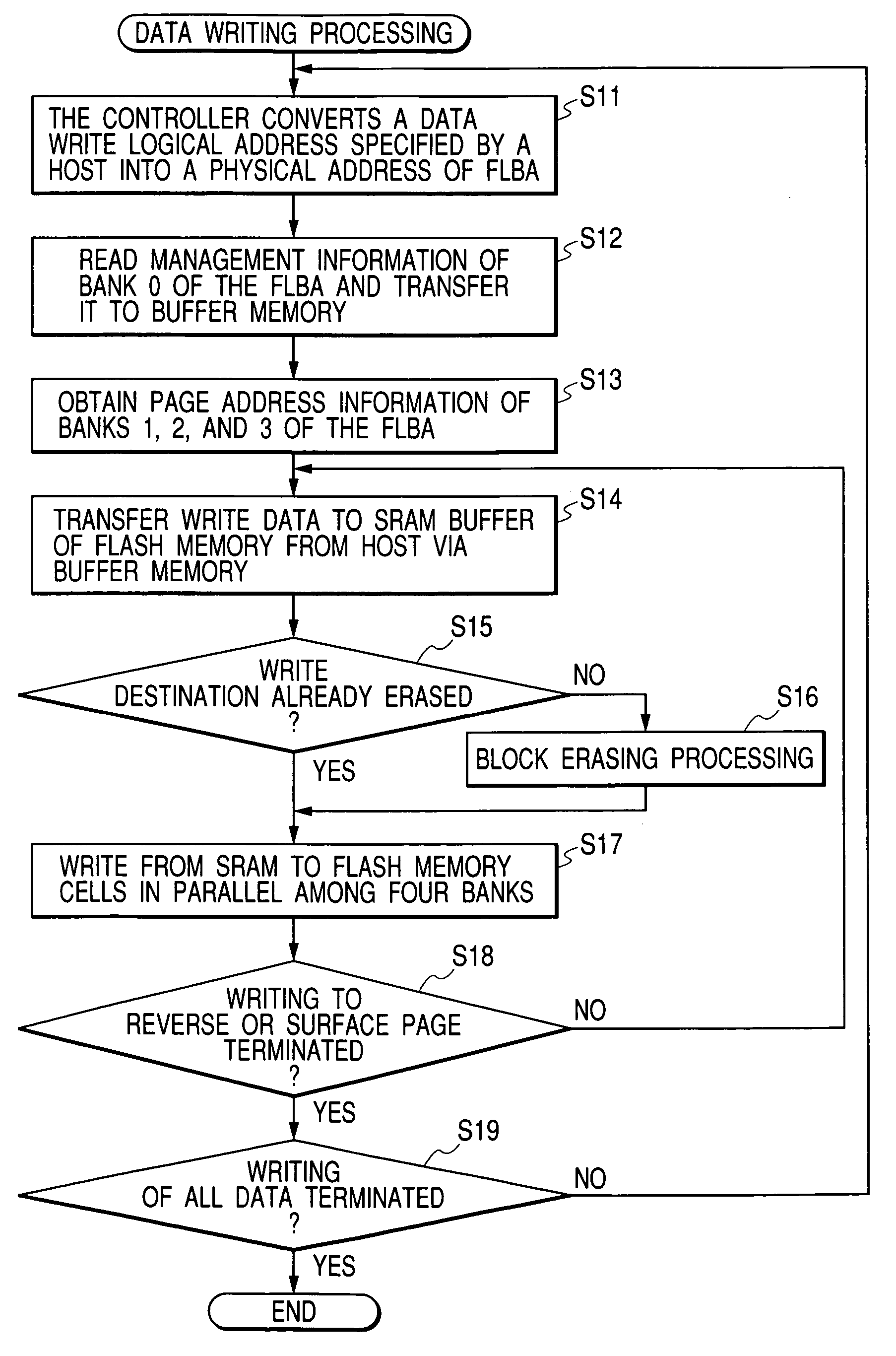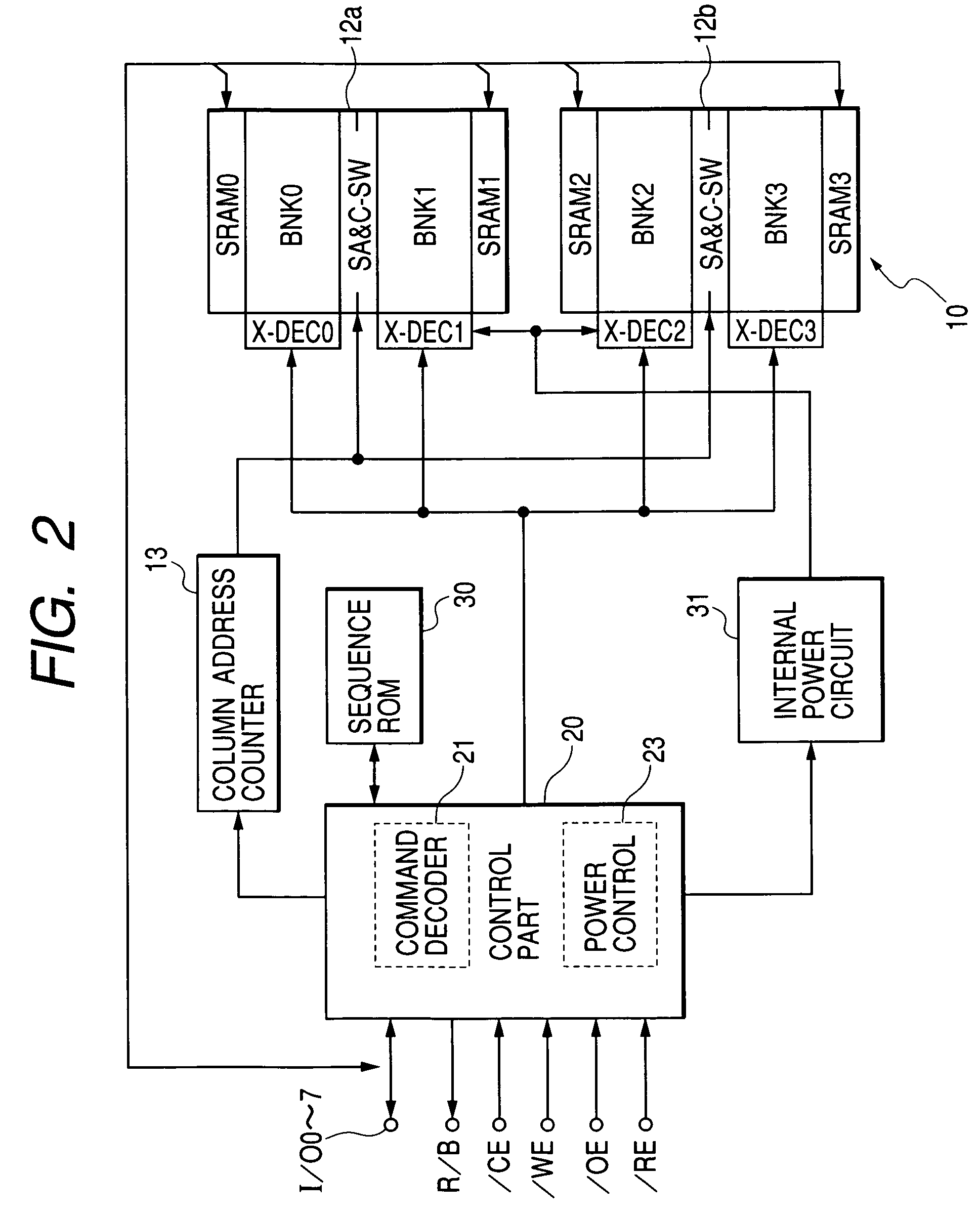Nonvolatile memory and method of address management
a memory and address technology, applied in the field of nonvolatile memory and address management, can solve the problems of multi-bank method problems, parallel writing among plural banks will not be possible, etc., and achieve the effects of increasing access time, slowing down access speed, and increasing memory such as external ram for expanding the reference tabl
- Summary
- Abstract
- Description
- Claims
- Application Information
AI Technical Summary
Benefits of technology
Problems solved by technology
Method used
Image
Examples
second embodiment
[0088]FIG. 9 shows the configuration of inter-bank block chains of the flash memory in address management of a table method of the second embodiment and allocation examples of table areas.
first embodiment
[0089]The configuration of the inter-bank block chains is the same as that in the first embodiment described using FIG. 5A. In FIG. 9, each box marked with the symbol FLBA denotes a block consisting two pages, a surface page and a reverse page. Blocks belonging to different banks that are marked with identical symbols constitutes an identical inter-bank block chain. Hatched blocks contain defective bits.
[0090]As shown in FIG. 9, also in this embodiment, blocks are sequentially selected and grouped one at a time to form chains from the start of each bank except blocks containing defective bits, and addresses are sequentially assigned to the chains from the start thereof until the last block of any one bank is reached.
[0091]Furthermore, in the second embodiment, a specific portion of the memory array in which the chains are formed as described above is selected as a table storage area TSA, the specific portion having less blocks containing defective bits, and remaining areas are used ...
PUM
 Login to View More
Login to View More Abstract
Description
Claims
Application Information
 Login to View More
Login to View More - R&D
- Intellectual Property
- Life Sciences
- Materials
- Tech Scout
- Unparalleled Data Quality
- Higher Quality Content
- 60% Fewer Hallucinations
Browse by: Latest US Patents, China's latest patents, Technical Efficacy Thesaurus, Application Domain, Technology Topic, Popular Technical Reports.
© 2025 PatSnap. All rights reserved.Legal|Privacy policy|Modern Slavery Act Transparency Statement|Sitemap|About US| Contact US: help@patsnap.com



